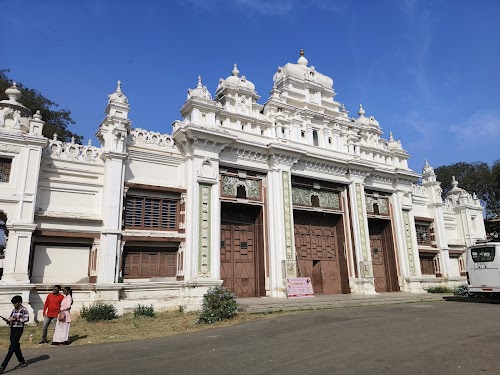
Jaganmohan Palace Art Gallery and Auditorium
Mysore, India
- Admire the palace architecture
- Attend a cultural performance
- Explore the art gallery
- Visit the auditorium
Known for:
Description:
The Jaganmohan Palace Art Gallery and Auditorium is a must-visit destination in Mysore, India, for art and history enthusiasts. It houses a remarkable collection of artifacts, including paintings, sculptures, and musical instruments, showcasing the rich cultural heritage of the region. The palace's architecture is a blend of traditional Hindu, Islamic, and European styles, reflecting the city's diverse influences. Visitors can admire the intricate carvings, ornate ceilings, and expansive courtyards. The auditorium hosts cultural performances, adding to the vibrant atmosphere. The gallery's collection includes notable works by Raja Ravi Varma, a renowned Indian painter, and exquisite examples of Mysore paintings. The palace also served as the royal residence for the Wodeyar dynasty before the construction of the current Mysore Palace. With its stunning architecture, captivating art collection, and historical significance, the Jaganmohan Palace Art Gallery and Auditorium offers a memorable experience for visitors.
History:
Jaganmohan Palace was built in 1861 by Krishnaraja Wodeyar III as an alternate royal residence. It served as the royal court for several years and hosted many dignitaries. After the original Mysore Palace burned down in 1897, the royal family resided here until the new palace was completed in 1912. In 1915, the palace was converted into an art gallery and auditorium. The gallery houses a significant collection of artifacts from the Wodeyar dynasty, including paintings, sculptures, and musical instruments. The auditorium continues to be a venue for cultural performances, preserving the palace's legacy as a center for the arts.